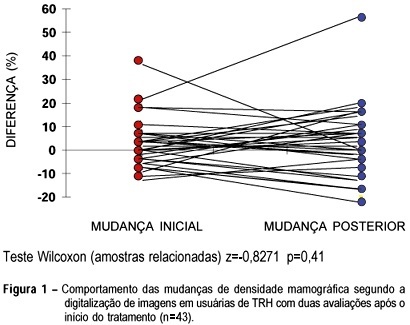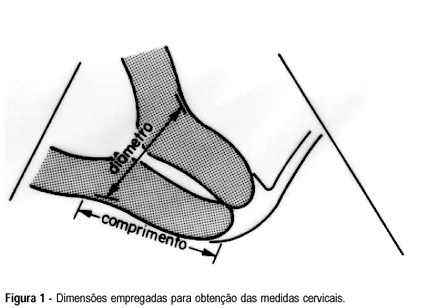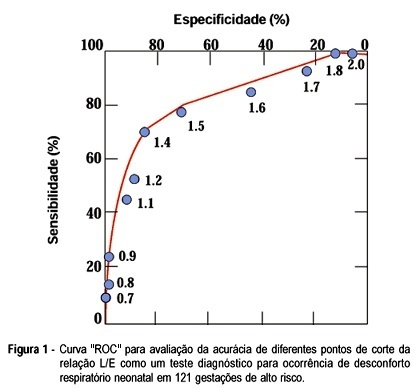Summary
Revista Brasileira de Ginecologia e Obstetrícia. 1998;20(6):303-308
DOI 10.1590/S0100-72031998000600002
Objective: to compare mammographic density changes, case by case, according to image digitization in three consecutive evaluations of users or nonusers of hormonal replacement therapy (HRT). Methods: 59 postmenopausal women were evaluated, 43 being users of cyclic or continuous estro-progestin hormonal replacement therapy, and 16 nonusers. The criteria of inclusion were: amenorrhea for at least 12 months, a normal mammographic examination at the beginning of the HRT (users) or the clinical follow-up without HRT (nonusers), at two incidences (mediolateral and craniocaudal). The following variables were used for the evaluation of mammary density: initial change - the difference between the first mammography after HRT performed in 12 ± 3 months and the mammography performed before HRT-and final change - the difference between the second mammography after HRT performed in 24 ± 3 months and the mammography performed before HRT. Wilcoxon and c² tests were used in order to evaluate the differences in mammographic density changes. Results: more than half (56.3%) of the women, HRT users with initial increase in mammographic density remained with the increase after the final evaluation. This finding was not significant (p=0.617). In the same group, the initial nonincrease was significantly associated with the final nonincrease (p=0.017). Among the nonusers, all breasts that were not totally fat at the initial evaluation presented a mammographic density decrease at the final evaluation. Conclusions: the majority of HRT users presenting mammographic density increase at the first evaluation, after approximately one year of use, remained with the increase at a second evaluation. After some time, the nonusers tended to present a significant mammographic density decrease (p=0.003).

Summary
Revista Brasileira de Ginecologia e Obstetrícia. 1998;20(6):350-356
DOI 10.1590/S0100-72031998000600008
Objective: to evaluate the uterine cervix by digital and transvaginal ultrasound examinations in pregnant women at high risk of having premature delivery. Methods: during the period between February 1995 and September 1997, 38 pregnant women at high risk of having premature delivery between the 20th and 36th week of gestation were examined. These patients were submitted weekly to both digital and transvaginal ultrasound examinations. The digital examination evaluated the uterine cervix using two parameters: length and dilation. The transvaginal ultrasound studied the length and the anteroposterior diameter of the uterine cervix. The behavior of these cervical measurements was analyzed throughout the pregnancies. The two methods were compared regarding cervical evaluation and accuracy of premature birth diagnosis. Results: the rate of premature deliveries was 18.4% (7/38). Digital examination resulted in cervical evaluations with variation coefficients of 30.3% for length and 193% for dilation. Transvaginal ultrasound resulted in cervical evaluations with variation coefficients of 14.7% and 26.5% for the anteroposterior diameter and length, respectively. The cervical length measures obtained on ultrasound were always greater than those obtained on digital examination. Through analysis with the hypothesis test, an indirect relationship was observed between the cervical length and the gestational period for digital examination and ultrasound study (p<0.05 and p<0.01, respectively), and a direct relationship between the cervical dilation and the gestational age observed on the digital examination (p<0.01). Conclusions: among the parameters studied by means of the digital and transvaginal ultrasound examinations, the ultrasound cervical length presented the best accuracy in the diagnosis of premature birth, proving to be more reliable for the evaluation of cervical alterations in pregnant women at high risk of premature delivery.

Summary
Revista Brasileira de Ginecologia e Obstetrícia. 1998;20(6):342-349
DOI 10.1590/S0100-72031998000600007
Objectives: to determine prognostic factors for vaginal delivery in pregnant women after previous cesarean section admitted to CAM-IMIP in labor.Patients and Methods: a case-control study was performed, analyzing all deliveries of patients with previous cesarean section admitted to CAM-IMIP between January 1991 and December 1994. Patients who had a cesarean section (n=156) were considered cases while patients with a vaginal birth were the controls (n=338). Inclusion criteria were: gestational age > 36 weeks, previous cesarean section at least 1 year before, alive fetus, spontaneous labor and vertex presentation. Patients with high-risk pregnancies, acute fetal distress and a previous vaginal delivery after cesarean section were excluded. Statistical analysis was performed with in Epi-Info 6.0 and Epi-Soft, using c² test, Fisher's exact test and Student's "t" test. Odds ratio and its 95% confidence interval was calculated and multiple logistic regression analysis was performed for the control of confounding factors. Results: overall rate of cesarean section was 31.6%. Maternal factors significantly associated with vaginal delivery were age < 20 years (OR = 2.07, 95% CI = 1.18-3.66) or > 35 years (OR = 0.54, 95% CI = 0.36-0.82), history of vaginal delivery (OR = 1.6, 95% CI = 1.01-2.55) and complications of pregnancy as indication for previous cesarean section (OR = 3.67, 95% CI =1.19-12.02). A significant association with vaginal delivery could not be detected for other variables: interval between previous cesarean section and present delivery, other indications for cesarean section and type of uterine suture. In a multiple logistic regression model the variables that remained associated with vaginal delivery were maternal age and previous vaginal delivery. Conclusions: maternal age below 20 years, previous cesarean section indicated due to gestational complications and previous vaginal delivery were favorably associated with vaginal delivery in patients with prior cesarean section. Risk of repeated cesarean section is increased in pregnant women aged 35 years or above. These factors should be contemplated when obstetrical evaluation of the delivery route is performed.
Summary
Revista Brasileira de Ginecologia e Obstetrícia. 1998;20(6):335-341
DOI 10.1590/S0100-72031998000600006
Objective: to analyze maternal and fetal folate status in cases of neural tube defects (NTD). Methods: a case-control study was designed with 14 cases of fetuses with neural tube defects (study group) and 14 cases of fetuses with other unrelated malformations (control group) gestational age matched, in low-risk pregnant women. Both total and methylated folic acid levels in fetal and maternal compartments using serum and tissular (red blood cells) concentrations and also average corpuscular volume, hematocrit and hemoglobin levels were determined. Fetal and maternal samples were obtained immediately before termination of pregnancy. Results in both groups were compared using a gestational age paired t-test. Results: there were no statistically significant differences in fetal folate levels and fetal hematologic parameters between both groups However, both total (239.9 ng/mL in NTD against 399.1 ng/mL in control group, p=0.01) and methylated (201.9 ng/mL in NTD against 314.0 ng/mL in control group, p=0.02) maternal red blood cells folate levels were significantly lower in the neural tube defect group. Maternal serum folate levels were similar in study and control groups. Conclusion: this study showed that maternal red blood cell folate but not serum folate was significantly reduced in mothers of fetuses with neural tube defects.
Summary
Revista Brasileira de Ginecologia e Obstetrícia. 1998;20(6):315-321
DOI 10.1590/S0100-72031998000600004
The objective was to evaluate the accuracy of the foam stability test, lecithin/sphingomyelin (LS) ratio, presence of phosphatidylglycerol (PG) and lung profile (L/S ratio > 1.7 and PG present simultaneously) in 121 consecutive high-risk gestations at the São Paulo Hospital from January 1990 to January 1995. Delivery occurred within 3 days of fetal lung maturation testing. This is a prospective study in which the sensitivity, specificity, positive (PPV) and negative predictive value (NPV) of all the tests were determined. Neonatal respiratory outcome and amniocentesis results were stratified by gestational age for comparison. The distribution of the studied population according to maternal pathology was diabetes mellitus (48), hypertensive disorders (41), Rh isoimmunization (14) and miscellaneous (18). Respiratory distress (RD) was present in 33 infants (27.2%), mainly in the diabetic group. There was no false negative using lung profile (all patients) and foam stability tests among hypertensive pregnancies (specificity 100%), but there were about 20% to 50% false positives in the other tests. Overall, all four tests had a low PPV: 23% for foam test, 51% for L/S ratio, 63% for PG, 61% for lung profile, and high NPV: 92% for foam test, 88% for L/S ratio, 89% for PG and 100% for lung profile. All tests had less accuracy in the diabetic pregnant women. This study shows that the presence of PG and L/S ratio > 1.7 in the amniotic fluid of high-risk pregnancies confirms maturity with a very low risk to develop RD and that the foam stability test was useful as a first-line test to predict the absence of surfactant-deficient respiratory distress syndrome, particularly in hypertensive pregnant women.

Summary
Revista Brasileira de Ginecologia e Obstetrícia. 1998;20(3):151-154
DOI 10.1590/S0100-72031998000300005
A retrospective study examining medical records of female prostitutes attending the STD/AIDS Reference Center in Vitória, Brazil from January/93 to December/96 was conducted. During this period, 180 women received medical and psychological care in this clinic. Mean age was 25.9 year (SD=6.8). Out of 180, 140 agreed to be tested for HIV, of whom 12 (8.6%) had a positive result. Among 157 women who agreed to be tested for syphilis, 144 (91.7%) had a negative result, while 13 (8.3%) had a positive one. According to the educational degree, 6 (3.3%) women were illiterate, 114 (63.3%) attended elementary school, 37 (20.6%) attended secondary school, 7 (3.9%) went to college and 16 gave no information. One hundred and forty-one patients (78.3%) were single, 17 (9.4%) married, 10 (5,5%) divorced and 4 (2.2%) widows. The frequency of condom use was: always, 56 (31.3%), sometimes, 93 (52.0%), and 30 (16.8%) never used condoms. Other STDs were reported by 89 (49.4%) women and 9 (5.0%) reported intravenous (IV) drug use. There was a significant difference between the HIV positive and the negative group only regarding IV drug abuse (p=0.031) and syphilis infection (p=0.014). The present study showed prevalence rates of HIV infection among prostitutes in Vitória much higher than those found in the general population. There is a pressing need to improve medical assistance and educational campaigns especially designed to reach this population of women, and focusing the importance of regular condom use and the risks associated with IV drug abuse.
Summary
Revista Brasileira de Ginecologia e Obstetrícia. 1998;20(3):145-149
DOI 10.1590/S0100-72031998000300004
Although 80 to 90% of all dead fetuses may be spontaneously eliminated after two to three weeks from death, labor induction has been the mostly used management. The purpose of the current study was to evaluate the results of labor induction for pregnancies with fetal death and gestation age above 20 weeks. It was a descriptive clinical study which was performed at the Hospital e Maternidade Leonor Mendes de Barros in São Paulo, Brazil. One hundred and twenty-two pregnancies with fetal death were evaluated regarding their social and demographic characteristics, causes of fetal death, previous pregnancies history and delivery (induction, route, complications). The statistical procedures used were estimation of mean and standard deviation and chi². The main causes of fetal death were hypertension and infections. The mostly used drug for labor induction was misoprostol (37.7%) followed by oxytocin (19.7%), while 27% of cases had spontaneous onset of labor. The mean time of induction was 3 hours. The majority of women had vaginal delivery and cesarean section was performed in 9.1% of them. It is concluded that labor induction for fetal death is safe and efficient, irrespective of the method used. Misoprostol when used in the vagina is specially useful for cases with an unripe cervix because of the modifying effect of the drug on the cervix.